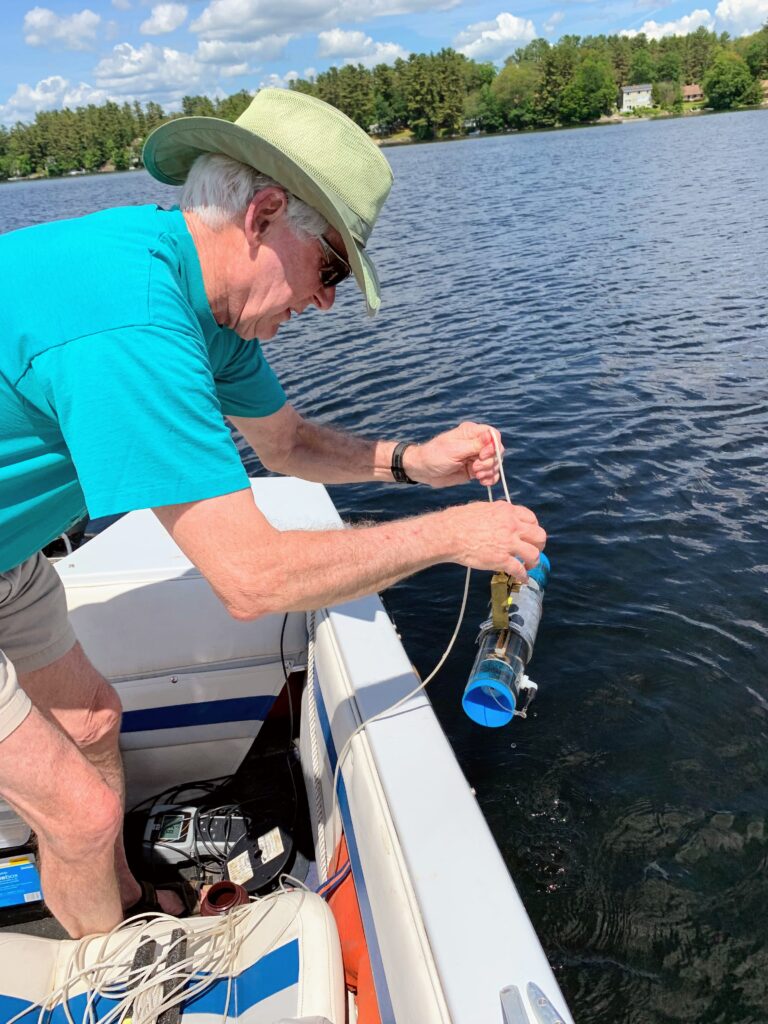By Woody Trask
This report summarizes the findings of the 2022 water quality monitoring program for Taylor Pond. Clarity readings and water quality measurements were conducted monthly from June through September by Woody Trask with additional clarity readings taken mid-May to late September by Michael Heskanen. Since 2004, Taylor Pond Association has been collecting its own water samples and performing most tests. Phosphorus analyses are conducted by the DHHS Health and Environmental Testing Laboratory.
2022 was an exceptionally good year for Taylor Pond. A record high single clarity reading (7.38m) and a new high average clarity reading (6.12m) were recorded. In addition, there was a low level of coloration especially in June and September. Both conditions might be attributed to having had very little precipitation; hence less run-off and infiltration.

Collecting a water sample for phosphorus.
The average 5 meter core sample phosphorus reading was lower than last year, but slightly higher than the historical average. The average 12 meter bottom phosphorus reading was much higher than last year due to a very high reading in September (an anomaly?). All other monthly readings were in the low to normal range.
Values for pH, alkalinity and conductance were all within the normal range of variation from the historic mean.
The average surface temperature taken at 1 meter depth was 23.9°C (75°F), 0.6°C (1.1°F) higher than last year and 1.0°C (1.8°F) higher than the average for the past 10 years. In spite of the high temperatures, there were no algal blooms reported in 2022.
“Ice in” occurred on January 11, 2021, about a month later than last year, and the “ice out” date was April 4th making for a much shorter than average iced-over period. The historical average for “ice out” is April 14.